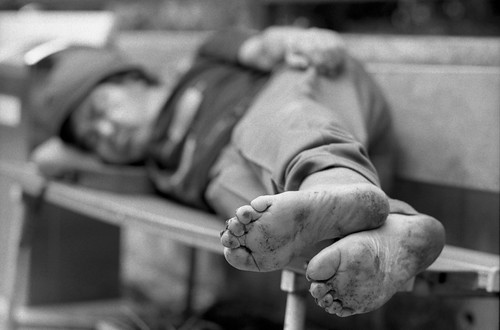
It’s commonly noted that “Knowledge is Power”, however, the
converse implication of that statement isn’t widely advertised. A lack of education can affect more than just
the individual; it can affect a whole community.
Give a thought to the facts behind poverty. The poverty line in America is $21,834. The estimate for a family of four to live on
a basic needs budget is $35,000. With
such a large gap between survival and poverty, it’s no surprise that many
families live paycheck to paycheck. With
families struggling to afford basic essentials, education related materials are
many times put on a back burner.
Schools are the unintended victims of poverty. Schools are tied to property taxes, and as a
result, education systems in less-fortunate areas receive less funding than
their affluent-neighborhood counterparts.
Astoundingly, three quarters of America’s schools report needing repairs
or renovations. It comes as no surprise
that schools in poor condition are located in areas where 70% of the population
falls below the poverty line. With
schools unable to keep up with repairs, the education quality of the students
is sub-par, leading to higher dropout rates, higher crime, and higher
unemployment.
Education challenges are not just limited to school hours or
building repairs. While our school
systems struggle to impart a valuable education experience, our own families
strain to afford basic education supplies.
Many students get no educational enrichment at home because of financial
limitations or educational barriers.
Parents that have attended schools with these hindrances may struggle to
understand their children’s homework, and find themselves frustrated and unable
to help their children study or complete schoolwork. Tutoring or special education assistance is
completely out of the question due to rising costs and the lack of
affordable/free education resources.
This leaves 1 out of four students -and 40% of minorities- dropping out
of high school. Children of poor
families are six times more likely to drop out than children of families above
the poverty line.
The NAEHCY says “According to the most recent federal data, 1,065,794 homeless students
were enrolled by U.S. preschools and K-12 schools in the 2010-2011 school year.
This is the highest number on record, and a 13 percent increase over the
2009-2010 school year. The number of homeless children enrolled in public
schools has increased 57 percent since the beginning of the recession
(2006-2007 school year).
It is important to note that this number is not an estimate of the prevalence of child and youth homelessness; in fact, it is an underestimate, because not all school districts reported data to the U.S. Department of Education, and because the data collected represents only those children identified and enrolled in school. Finally, the number does not include all preschool-age children, or any infants and toddlers.”
It is important to note that this number is not an estimate of the prevalence of child and youth homelessness; in fact, it is an underestimate, because not all school districts reported data to the U.S. Department of Education, and because the data collected represents only those children identified and enrolled in school. Finally, the number does not include all preschool-age children, or any infants and toddlers.”
With these staggering statistics, how can homeless and underprivileged
families find resources to foster literacy and education? Thankfully, the No Child Left Behind Act, and
the McKinney-Vento Act offer some safeguard to ensure an education is
possible. The Act, in short, ensures
that students who are homeless can remain in school, even if their temporary
living situation is in another area.
Schools MUST provide transportation.
Children who are homeless can enroll and begin attending school
immediately, even if they cannot provide the documents normally required. Every school district must have a homeless
liaison to ensure the McKinney-Vento Act is enacted and carried out. Each state must also have a McKinney-Vento
Act Coordinator. This act contains many
other provisions designed to improve the education of children and young adults
facing homelessness. There are also many
education organizations that exist to assist those suffering from poverty or
homelessness, such as the NAEHCY,
National Coalition for the
Homeless, and the National Center
for Homeless Education. Many states
and school systems have resources available as well.
Megan Wilson is a blogger, stay at home mom, and freelance
writer. She frequently writes on Information and Referral Software
Resources:





